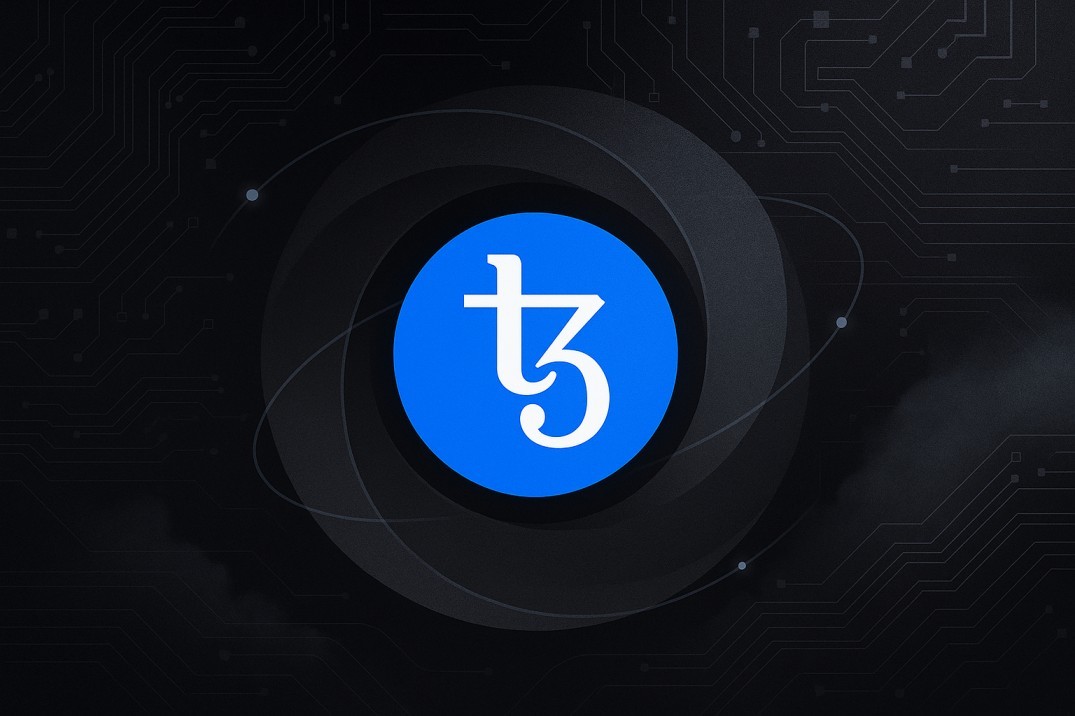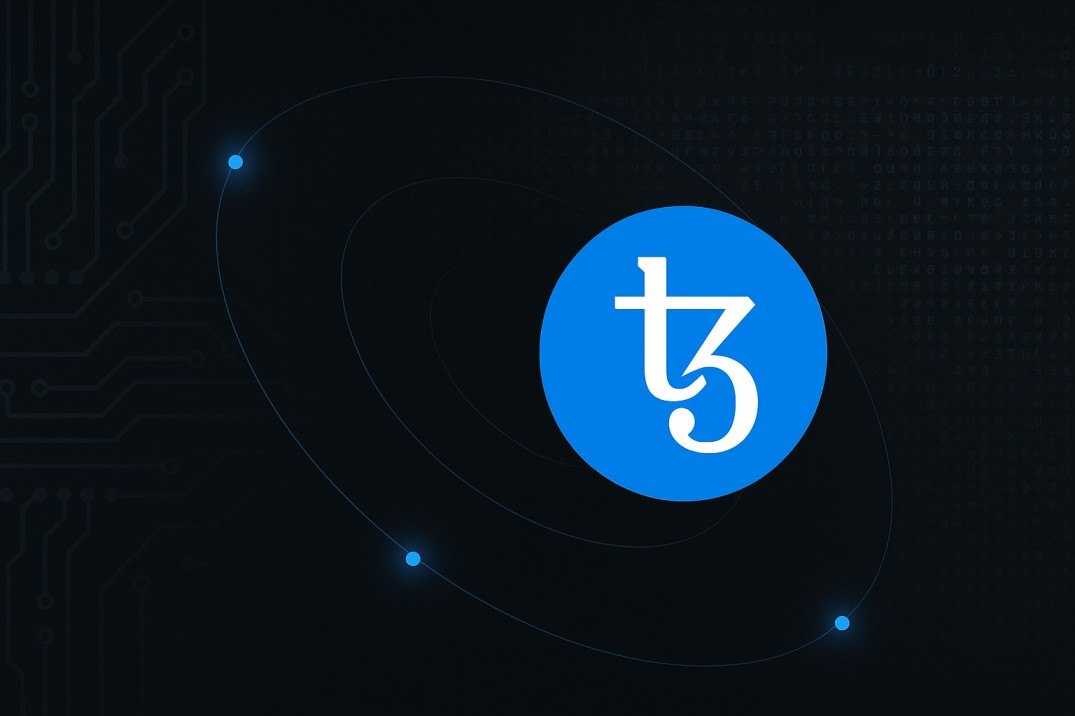TL;DR
- Tezos (XTZ) is a high-performance, open-source blockchain platform focused on security, on-chain governance, and formal verification.
- It uses a Liquid Proof-of-Stake (LPoS) consensus, allowing token holders to bake or delegate, and rewards participants for helping secure the network.
- Tezos is "self-amending," which means the protocol can evolve via stakeholder proposals without needing hard forks.
- Strong focus on formal verification: contracts can be mathematically checked before deployment to avoid bugs.
- Circulating supply is around 1.1 billion XTZ, inflation rate roughly 4-6% annually through staking rewards.
- Key advantages: security, energy efficiency, decentralized governance, adaptability. Risks include governance complexity, slow upgrade cycles, competition, and regulatory uncertainty.
Tezos is a blockchain platform built with several core goals: secure smart contracts, energy-efficient consensus, and governance baked into the protocol. It's open source, and has been running since 2018. The project was proposed in 2014 by Arthur and Kathleen Breitman. One of the main ideas was to design a system that can evolve over time via stakeholder input, without requiring disruptive hard forks.
Smart contracts on Tezos are written in languages designed for precision, and the notion of formal verification is central. That means code can be mathematically checked against specifications to prevent bugs or unintended behavior. This makes Tezos especially suited for applications where correctness matters (finance, identity, tokens representing real-world value).
Consensus, Governance & Upgrades

Liquid Proof-of-Stake (LPoS)
Tezos uses Liquid Proof-of-Stake, which means that XTZ holders can either run a baking node themselves (known as "bakers") or delegate their staking rights to other bakers while retaining ownership of their tokens. It lowers the technical barrier and allows broad participation while keeping the network secure.
Bakers must meet a minimum stake to operate, and they also have responsibilities in block production and protocol stability. Delegators support bakers, share in rewards, and influence governance via voting rights. Delegation is flexible-holders can change where they delegate.
On-Chain Governance & Self-Amendment
One of Tezos' standout features is its governance model. Token holders can propose upgrades, vote on them, test them, and, if approved, activate them-all on-chain. This avoids hard forks that many other blockchains go through when consensus breaks. The process is structured in phases: proposals, exploration voting, cooldown period, promotion voting, and adoption.
This self-amendment model helps Tezos evolve over time while trying to remain stable and united. It has been tested through many protocol upgrades since launch, each improving aspects like performance, security, or gas costs.
Security, Formal Verification & Tokenomics

Tezos places high importance on correctness in code. Its smart contract language (Michelson, along with higher-level languages like LIGO, SmartPy, Archetype) allows for formal verification. In practice, tools like Mi-Cho-Coq allow mathematicians and developers to prove that smart contracts adhere to required behavior.
This reduces risk in cases where contract bugs can lead to loss of funds or exploitation. For applications in finance, legal contracts, or regulated systems, this level of assurance matters.
Tokenomics: Supply & Inflation
There is no capped maximum supply defined in the protocol. Tezos is inflationary, with new XTZ issued to bakers and delegators as staking rewards. The inflation rate is approximately 4-6% per year, depending on network participation.
Circulating supply is about 1.1 billion XTZ as of latest data. Because tokens are emitted via staking rather than large initial premine or ICO for team/reserves alone, the issuance is tied to securing the network. Delegation rewards allow smaller holders to participate.
How It Works: Transactions, Staking & Ecosystem
- Transactions and smart contract operations require XTZ for gas (transaction fees). Because PoS is energy-efficient, Tezos operates with lower environmental costs than proof-of-work blockchains.
- Staking (or baking) involves either running a node or delegating tokens to a baker. Delegators share rewards; bakers must maintain reliable infrastructure, as their performance affects rewards.
- The governance model means that improvements are proposed, voted, tested, then adopted if approved: this ensures the protocol can adapt without needing to split.
- Tezos has seen growth in real-world use: NFT platforms, DeFi applications, and institutions using it for asset tokenization. Also, major organizations like Societe Generale and Ubisoft have built or partnered with Tezos for blockchain projects.
Advantages & Strengths
Tezos brings several strengths to the table:
- Strong governance model: Token holders control the protocol's evolution. Changes tend to be less contentious.
- Formal verification: Useful for high-value contracts; reduces risk of bugs.
- Energy efficiency: Being PoS and avoiding wasteful mining makes it more sustainable.
- Inclusive staking / delegation: Smaller holders can join via delegation, making staking participation broad.
- Continuous innovation without forks: Features and upgrades can be adopted smoothly.
Challenges & Risks
Tezos is not without its trade-offs and risks. Key areas to watch:
Governance complexity: Although self-amendment is powerful, reaching supermajority approval can take time. Improvements may move slower than in less structured systems.
Inflation vs value stability: Because supply increases via rewards, maintaining demand and utility is necessary to prevent dilution.
Competition: Many blockchains are offering governance, low fees, energy efficiency, etc. To stand out, Tezos must also build strong dev ecosystems, tools, and strong use cases.
Developer tooling & user friendliness: Writing formally verified code or learning Michelson or new languages has a steeper learning curve for many developers. Bridging that is essential.
Regulatory scrutiny: As with all blockchains, dealing with legal, tax, and compliance issues across jurisdictions is challenging.
Final Thought
Tezos is one of the more mature platforms in the blockchain world. It combines strong technical foundations-formal verification, energy-efficient consensus, inclusive staking-with a governance mechanism that allows evolution without upheaval. For projects where security, stability, and adaptability matter, Tezos is a compelling choice.
Its biggest tests lie ahead: accelerating developer adoption, proving usability in more mainstream applications, and finding balance between innovation speed and stability. If Tezos continues to align its protocol upgrades, community participation, and token economics well, it may well keep growing as a cornerstone of trustworthy Web3 infrastructure.
ALSO READ: No More Front-Running: Why COTI V2 Might Just Save DeFi











